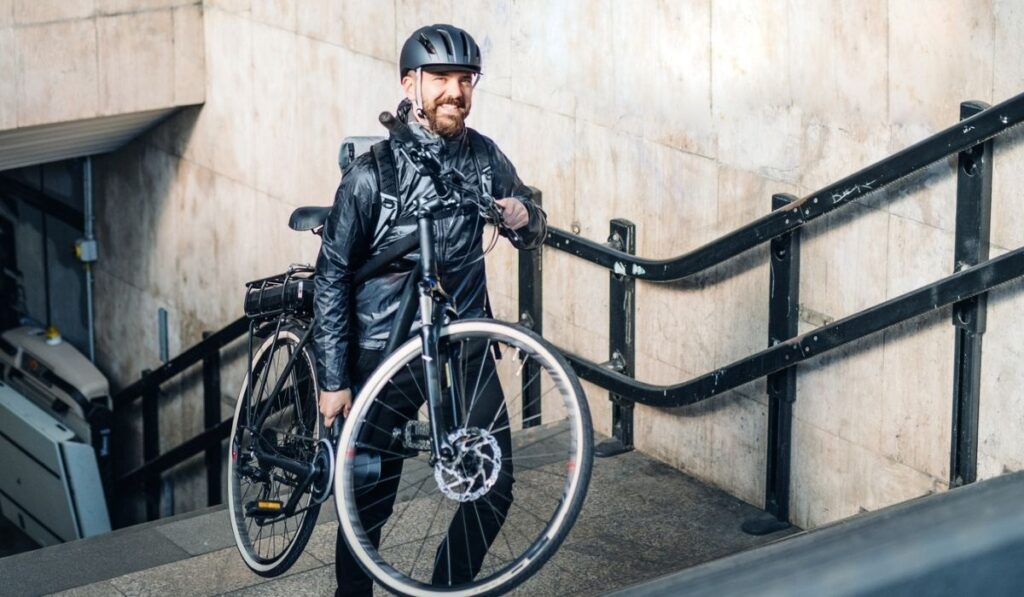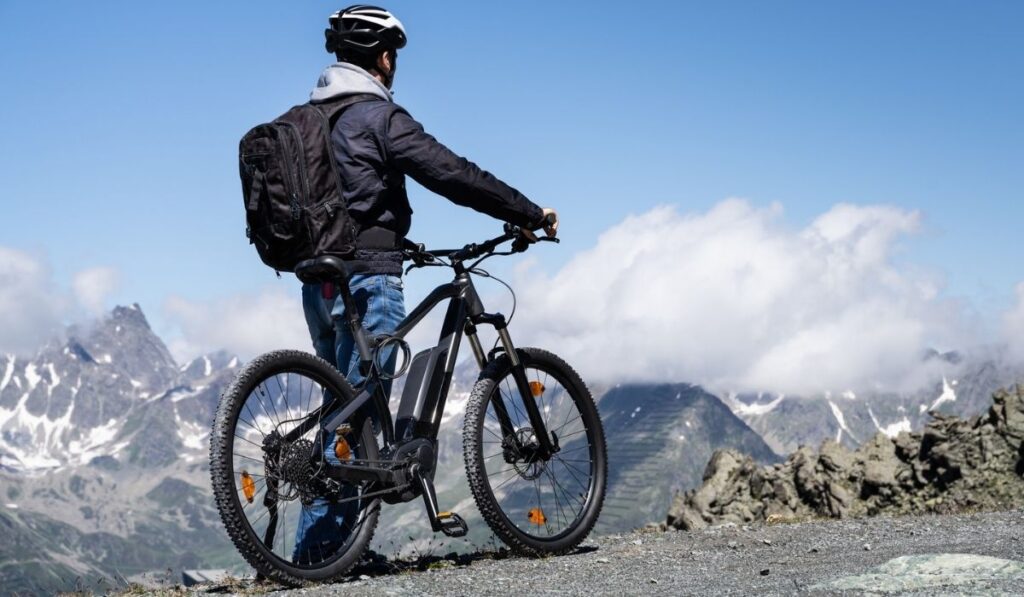In all aspects, technology has made our lives so much easier. One of the clear examples of this is the invention of electric bikes. These E-bikes offer energy-efficient, low-cost, environmentally-friendly transportation, and the physical and health benefits associated with these machines make them well worth the hype. Still, why do they have to weigh so much?
Electric bikes are heavy because of additional parts like the battery, motor, control system, and wiring, which come together to give the bike its bulky frame. An average e-bike weighs about 60 pounds, and this added weight is usually no problem because of the extra power from the motor.
Although we know the various components that make these e-bikes heavier, we need to know how much weight each part contributes to the bikes’ overall weight. Maybe we can even understand if there’s any hope e-bikes will get lighter over time.
Which Electric Bike Components Add the Extra Weight?

A closer look at all the various components of the e-bike will reveal what component adds the most weight and which adds the least. It will also help us know how important these parts are.
The Motor
The motor makes up about 8 kg of the bike’s weight. The primary function of the motor/engine is to convert electric energy into mechanical energy that turns the wheel to get the bike moving. Just briefly, let’s review in a little bit more detail how the motor works:
Inside the motor, wires are wrapped around a series of poles – this is called a “stator.” When this motor draws power from the battery, electricity flows into these wires and becomes an electromagnet.
On the rotor, you can see permanent magnets. So when current goes through the electromagnet in a circular motion, these permanent magnets begin to spin. This spinning movement produces torque, which turns the wheel of the bike.
There are two kinds of motors: hub-motor and mid-drive.
- Hub Motors: Hub motors are positioned either at the front or rear of the wheel. This motor requires less shifting because it is attached to the hub and moves the wheels by itself.
- Mid-Drives: This motor is usually located in the middle, between the pedals of an e-bike, and features a chain that turns the bike tires. One advantage of the mid-drive is that tires are easier to change, and this motor makes you feel like you’re riding a traditional bike. In addition, using a mid-drive motor equals higher efficiency because the motor works in tandem with the bike’s gear.
You can always get lighter motors, but these won’t function as powerfully as their heavier counterparts. So, for a powerful e-bike, the increased weight form the motor is likely going to always be there.
The Battery
The battery is another component that adds to the weight of an e-bike. It usually weighs between 2 kg and 3.5 kg. The battery is the powerhouse of the bike; it stores power and pumps it into the motor, which would be transformed from electromagnetic energy into mechanical energy.
Although there are a wide variety of batteries to choose from, the best is lithium-ion. They are efficient, strong, and long-lasting. Another better option is the lead-acid battery- it is cost-effective and performs decently.
Unlike motors, which are a very mature technology, batteries are increasing performance and energy-to-weight ratios dramatically. It won’t be surprising if future e-bikes have significantly lighter batteries than those today.
Control Display
The control display allows you to control and regulate the motor and battery function. Through the display, you can see the battery speed and level, like a car’s. From there, you can adjust the power output of your bike’s motor. Luckily, this small (typically LCD) display isn’t adding much weight at all, since screens and screen technology have been pretty well optimized for low weight in the smartphone industry.
Control System
The control system is responsible for sending signals from the controls (be they on a screen or physical buttons) to the motor. Thus, it determines how and when the engine runs. There are three main types of control systems: pedelec, throttle only, and dual-control.
Pedelec
The term “pedelec” is derived from Pedal Electric Cycle. With pedelecs, electric power assistance is available only when you are pedaling. That means that the amount of power you get depends on how much you’re pedaling. Pedelecs are advantageous because they help save your bike’s battery since you aren’t solely relying on the motor’s power to move your bike.
Throttle-Only Control
The throttle-only control system is more simple and less expensive than other control systems. All you have to do is push the thumb throttle to whatever percentage you want, and you’ll get that percentage of power. For example, let’s say you push the throttle to 40%; that’s the percent of the motor’s power you’ll be using.
The one concern with these types of systems is that the throttle being on the handlebar means you can operate it without being in the proper position on the bike. With a pedelec system, both feet have to be on the pedals for the system to start adding power, so it’s inherently safer: when you have both feet on the pedals, you’re probably already in a seated position on the bike ready to go. With a throttle, you could be standing next to it and turn the handle, causing the bike to shoot off and fall over.
Dual-Control System
Like the name implies, the dual-control system uses both control systems – the pedelec and the throttle control systems. Generally, this system is arguably the best because it combines the energy-saving pedelec features with the choice of the throttle system.
However, one disadvantage of using this system is that sometimes you have to take your eyes off the road whenever you need to change the settings on the control display. That momentary distraction can be pretty dangerous for a cyclist, but if you know where you’re going you can plan when to be fiddling with controls, or just have a good feel for when it’s safe to do so.
Wiring
Compared to the other e-bike components, the wiring weighs the least. However, it still contributes to the overall weight that makes the electric bike heavier than the standard bike. It’s worth mentioning.
Wide/Extra Big Tires
Not all e-bikes have wide tires, but many do. The wide tires enhance speed while also ensuring that the bike is sturdy and safe. If you have large, fat tires on your bike, they’ll increase the weight significantly. Although, again, this added weight is usually pretty tolerable in the context of an E-Bike, where you have the bike to do a lot of the (literal) heavy lifting.
Does the Extra Weight Matter?

Yes, undoubtedly, electric bikes have numerous advantages, but there’s no denying that these bikes’ extra weight sometimes matters. For one, the heavier your bike, the more energy you need to move it, and the more battery capacity it uses.
Also, the weight makes the machine difficult to move around. Sometimes, these heavy-duty machines can prove difficult to control, especially if the motor is located at the rear wheel. This placement affects the bike’s balance.
How Heavy is the Average Electric Bike?
Electric bikes vary in weight, so while there are many lighter ones, there are some that are very heavy (when compared to a traditional bike). To explain better, let’s take a look at the Montanara Volta and the RadRover 5 electric bikes.
The Montanara Volta is a lightweight e-bike that weighs about 17 pounds and is regarded as the lightest electric bike. In contrast, the RadRover 5 weighs almost 70 pounds.
The Montanara Volta’s inventor used a homemade lithium-ion battery to power the bike because doing any more than that would make the bike heavier than he intended for it. Meanwhile, the RadRover runs on a heavy-duty 7.7 pounds battery. The RadRover also boasts an 8.7 pounds motor. Due to the size and weight that the manufacturer was aiming for, the Montanara was built with an ultra-light frame. On the other hand, the powerful RadRover 5 was constructed with 6061 Aluminum Alloy.
Looking at these two masterpieces, you would see that the battery and motor weight majorly influence the overall size of the bike. Also, the RadRover performs more functions than the Montanara due to its size and build.
Bottom line: It’s good to want a lighter e-bike, but have it in mind that you would be sacrificing a lot, like the powerful support of a heavier battery and motor. To get the most out of an electric bike, you should consider getting one that weighs an average of 50 to 60 pounds.
What is an Ideal Weight for an Electric Bike?
It’s okay if your bike weighs heavier than the standard bike; it’s a sign that the machine has been designed to last with heavier, expensive parts. Nevertheless, you should also bear in mind that the weight of an e-bike is largely determined by the weight of the motor, battery, and control systems.
While a standard non-electric bike could weigh an average of 20 pounds, its electric counterpart could weigh between 40 and 70 pounds. So, if you get an e-bike that weighs 60 pounds, then you are good to go.
Are E-Bikes Getting Lighter?
One good thing about technology is that it isn’t static – it progresses. One major proof of technology’s progression is the compactness of machines and tech products. A perfect example is a computer, which used to fill a whole room but now fits in a pocket.
Hence, it is safe to say that e-bikes are going to get lighter. Batteries and motors are at the point where they could start getting smaller in the coming years, and once that happens, e-bikes will get lighter. However, they might not get lighter simply because consumers aren’t demanding it. If the E-Bike functions, then how important is it to the rider, really, to get it from 60lbs down to 50?
